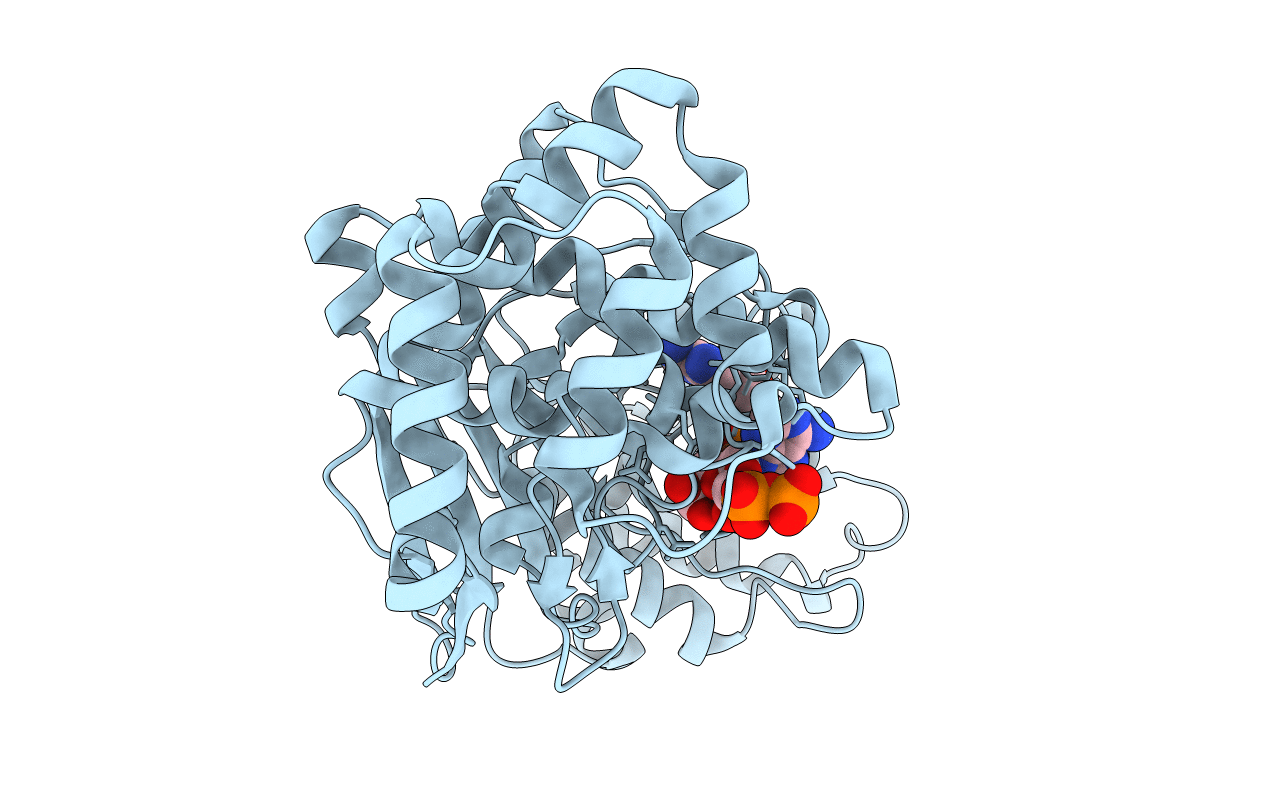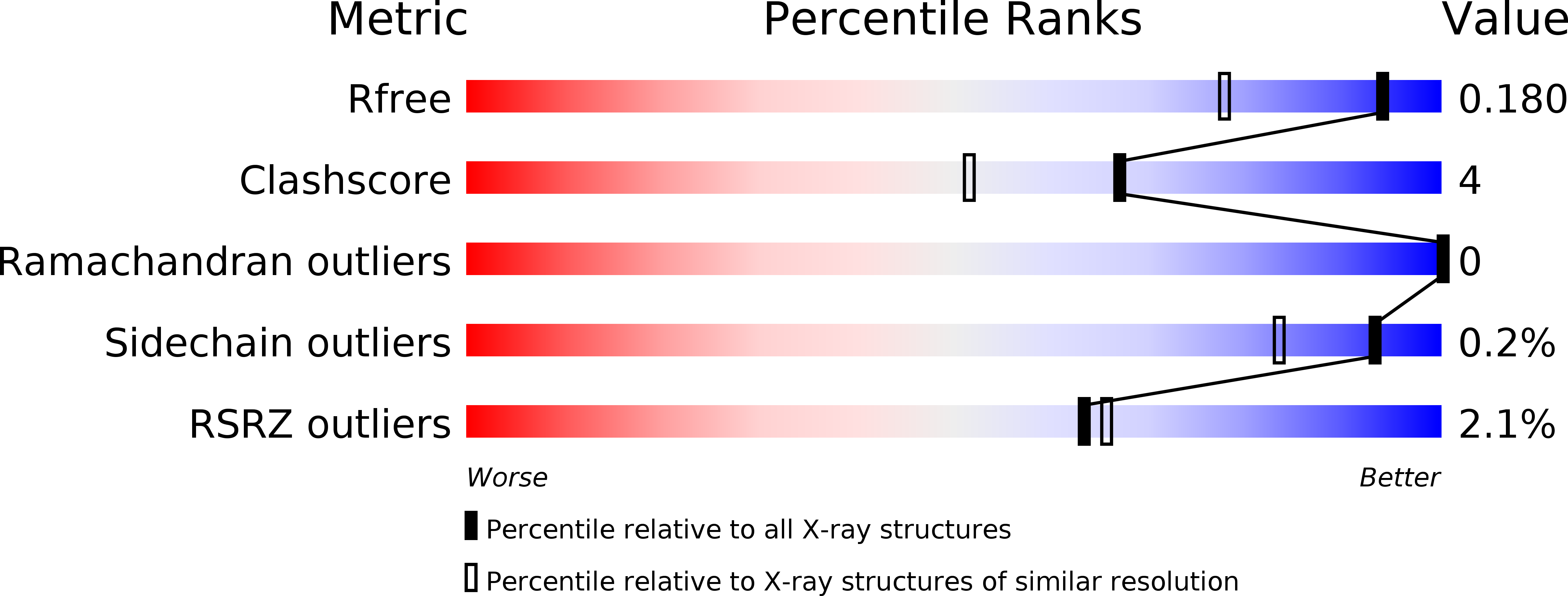
Deposition Date
2013-06-04
Release Date
2013-07-24
Last Version Date
2023-09-20
Entry Detail
PDB ID:
4L2H
Keywords:
Title:
Structure of a catalytically inactive PARG in complex with a poly-ADP-ribose fragment
Biological Source:
Source Organism:
Tetrahymena thermophila (Taxon ID: 5911)
Host Organism:
Method Details:
Experimental Method:
Resolution:
1.46 Å
R-Value Free:
0.17
R-Value Work:
0.13
R-Value Observed:
0.14
Space Group:
P 21 21 21


